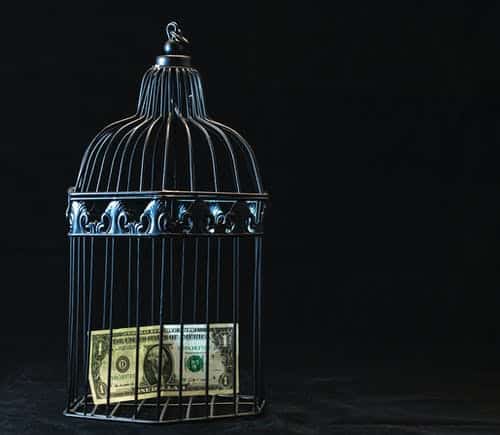
The Dangers of Price Transparency When Trying To Use A Customer Value Pricing Strategy 👑
There’s no doubt that finding the right pricing for your product is key to maximising your margins and ensuring that price sensitivity does not grow too high. However, there are many roadblocks and challenges your business can encounter. Especially when trying to utilise a customer value pricing strategy. We’ll be focusing on price transparency and why that can be hurting your business, especially with rapid digitalisation and the movement towards e-commerce.
>Download Now: Free PDF How to Drive Pricing Strategy to Maximise EBIT Growth
Table of Contents:
I. Customer Value Pricing Strategy – Dangers of Price Transparency
II. Are The Prices Of Products And Services Really Relative To Their Value?

Customer Value Pricing Strategy – Dangers of Price Transparency
A customer value pricing strategy or value-based pricing is a common method of pricing where the price of your product or service is based on customer perceptions. In other words, the price of an item reflects what the customer believes it is worth, regardless of the exact cost of production.
This is a common practice for businesses trying to build prestige around their brand, like Starbucks for example. However, this is also common for businesses where it’s impossible or impractical to know the exact cost of a unit sold per customer. For instance, movie tickets, mobile plans, or computer software (such as SaaS or Software As A Service, also known as cloud-based software).
In fact, there are probably more businesses than you think that employ a customer value pricing strategy. Unfortunately, with the advent of e-commerce and the abundance of information online, price transparency has become something of a hindrance or challenge.
Since so much information is available online, buyers have naturally started researching what it costs to produce what they are buying. This has created challenges for businesses trying to increase their margins by shifting to value-based pricing.
Pricing Transparency Vs Pricing Opacity
Buyers naturally want price transparency. Sellers naturally want price opacity. Both notions pose challenges to one another. For businesses, this means extra effort will have to be made to convey the unique features and benefits of your products.
When marketing is done well, customers stop looking too deeply into why items cost so much. Brands that are incredibly successful at these include powerhouses like Nike or Apple. People believe their products are superior and stop questioning the price.
Why Price Transparency Can Hurt Business – Customer Value Pricing Strategy
The public has been known to demand transparency from corporations in terms of costs. For large corporations, transparency may be useful to convey a sense of ethics and authenticity. However, there are a number of ways that price transparency can hurt a business. These are four main pain points surrounding transparency:
Prevents Higher Margins
The first, as we have mentioned, is that it prevents higher margins. For businesses with pricing that is not reliant on production costs, this can be tricky. An airline, for example, can’t exactly factor in every single cost it takes to run the business.
Calling for price transparency could erode higher margins, leaving less profit. Customers can claim to understand prices and don’t see the value in pricing higher and you would be forced to compete with the lowest prices in the industry. This could create more high-competition markets, commoditisation, and high price sensitivity.
Commoditises Products and Services
When products and services get turned into commodities, they become indistinguishable from one another. This can pose big challenges, especially for businesses without an incredibly unique feature.
Lower cost items become interchangeable, making marketing less effective, and putting even more pressure on maintaining prices in line with other competitors. Larger corporations also tend to dominate smaller businesses in this case.
Weakens Customer Loyalty
Customers, armed with research about how much something costs to produce, may likely begin to infer that your prices are too high. This problem could be further exacerbated by discounts. Customers may believe that the company is still earning from price points during temporary discounts, and become distrustful of regular prices.
This has happened to large companies like Procter & Gamble who began to rely heavily on sales in the 1980s. Consequently, their customers started to see their regular prices as excessive. Instead of drawing in new customers, they pushed loyal ones away. The damage caused by price transparency and bad discounting practices can be tough, even impossible to repair.
Promotes Perceptions of Unfair Pricing
Price transparency could also promote perceptions of unfair pricing. Customers see high prices and call them unethical and accuse them of overcharging. This can be especially difficult when businesses have to raise prices to account for updated input costs, labour costs, and inflation.
In reality, pricing strategies are complex and production costs don’t equate to market perceptions and don’t factor in other aspects behind the offering. For example, this number may fail to consider marketing, distribution, employee salaries, store rents, website maintenance, etc.
External factors, like inflation or input costs, can also be challenging, coupled with price transparency. Oftentimes, companies will try to absorb costs as much as possible to prevent price increases. However, at a certain point, this is no longer possible.
Positive Implications: Creating Value for Target Customers
There are, however, some plus sides to price transparency and availability of information that is equally important to consider with this topic:
- The internet and availability of information and data have eroded “risk premiums”. Previously, customers only had limited knowledge of products and would gravitate solely towards well-known brands. These days, with more access to research, customers are more likely or willing to purchase from smaller businesses
- Searches become more efficient, making industrial procurement more efficient as well.
- The internet promotes rational shopping. Customers are smarter and less likely to fall prey to attractive marketing schemes. Rather than playing to the senses and making things visually appealing, brands have to market smarter.
〉〉〉 Get Your FREE Pricing Audit 〉〉〉
Bottomline – Creating Customer Value for Target Customers as a Pricing Strategy
In conclusion, pricing strategies are complex. For your strategy to be a success, you need to consider all challenges possible. For a customer value pricing strategy, it’s important not to neglect the impact of the internet and price transparency. But not to worry, a competent pricing team can help you navigate through all of these potential hurdles.

Are The Prices Of Products And Services Really Relative To Their Value? 💵
When it comes to price and value, are prices really relative? What does pricing on purpose do in creating and capturing value for customers?
The Relationship Between Price And Value
The relationship between price and value in business refers to the connection that customers make between the price set by a company for its product or service and the quality of the product itself. In some cases, higher-priced products are perceived to be of higher quality and/or value. Nevertheless, it is still influenced by a variety of factors, including customer lifestyle and demographic.
It’s critical for businesses to strike a balance between price and value. Hence, those who can persuade customers that their prices reflect the value of their offerings are more likely to succeed. Businesses must be strategic in order to achieve this. Think about value-based pricing, for instance. This strategy is customer-centric. Simply put, you price a product at what your customers are willing to pay for it. So, how can business leader start their value-based approach in pricing?
Written by Joanna Wells, Author of TeamBuilder360 and Director of Taylor Wells
A classic tenant in pricing literature is that humans are not great at discerning value regarding prices. As Oscar Wilde paraphrased once, “I do not care which shoes are cheaper, but I want the more expensive ones.”
In a B2B industrial environment, we can see the relativity of prices concerning price and value. I also want to give a real-world example below which I think highlights a couple of issues in this price value regard. I have changed a few details to protect a certain regional business model!
We have a B2B industrial market selling services by a unit. The external cost base is different in each geography but the cost to serve is the same. All businesses claim to follow a cost-plus approach and complain about extremely intelligent procurement professionals bashing them every day. The example is as below:
| State | External cost | Cost to serve | Sell price | Actual profit per unit |
| New York | 18 | 6 | 26 | 2 |
| California | 14 | 6 | 22 | 2 |
| Washington DC | 6 | 6 | 16 | 4 |
| Idaho | 3 | 6 | 14 | 5 |
| Note: price in USD$ | ||||
It is important to note that regional buying differences should not make much of an impact as the product was procured on a national basis. It was also clear that the profit margin tended to be higher when the unit price cost base was lower.
Price Value Takeaways – Pricing on purpose while creating and capturing value
I have to be honest and say I am not fully certain why this should be so. But I am interested in whether you or any of my readers have experienced similar situations.
- I assume that as the price is lower in Idaho and DC, the buyer spends less time looking at it.
- They are unaware of the cost base and so spend most of their time pushing down the higher rates.
- Is there an element of “free-riding” by the cheaper states? Are we pushing through higher rates as their state is smaller and there is less attention paid to Idaho and DC?
- I suppose people are compensated for living in Idaho!
Many businesses are springing up in different fields, such as Waster.com.au offering pricing transparency and flexible contracts in waste management.
What Does The Research Say about Price and Value?
Research theorises that we structure the price of services or products with their attributes. As a matter of fact, what we put in the mind of the consumers is how we have to choose solutions that are right for them in the long run.
When a consumer purchases a simple service or product on an immediate impulse, it’s based on human qualities and feelings. Those are emotions like fear, greed, or a desire to belong. The same can be said about the recent developments in Australia’s property market, seeing an increase in buyers as they fear missing out on housing properties.
If we compare the price and value of basic necessities such as food and water with luxury items (like expensive jewellery and bags), the highly valued item is priced lower. While the luxurious items are priced higher.
See, customers define what they think the value is. Just take a look at people’s willingness to pay in the Auction Scene and What it Teaches Us About Value. Most customers have no problem paying for a higher price in exchange for great value.
Say, you pay for a monthly automation software or application. So, what’s the value? Well, no matter the price as long as it’s reasonable within the market range, the tradeoff is how the app saves you hours of manual paperwork and computations.
In other words, value can range anywhere from emotional compensation or convenience.
Customer Value Pricing Strategy: Decision-Makers Takeaways
If the product is in the same price bracket as that of the competitor, the consumer will look at the other attributes of your product and if it is better. But the way you present your price could be the factor that helps the customer make a buying decision.
- “Same price, more functions”. Your product is the same price as the competitor but with more functions. So, this makes your product more attractive than the other one.
- “Same functions, cheaper price”. Therefore, your product has the same functions as the competitor but is priced lower. Thus, the consumer will choose the lower-priced item.
- “Better features, higher price, but superior design”. The product is more expensive than its competitor but has functions that are user-friendly with a smooth interface design.
Price is about Communication
Price value in businesses depends on the profit made and the cost value of a product. However, pricing is not just about the money. Rather, it is a way to communicate to the consumer that the product deserves that price.
For example, a Rolex watch would not cheapen its products to compete with a Seiko watch. The expensive price of the Rolex signifies elegance and luxury. Thus, making it cheap would deter the public from buying it.
In this case, pricing on purpose is about creating and capturing value. Similarly, an imbalance between the number of buyers and sellers causes price changes. That means a higher supply with a lower demand decreases prices. While excess in demand with low supply will increase prices. Read Price Elasticity Demand Formula.
Quotes about price and value do not mean the same thing. To enumerate, the price is an indicator of what the customer is willing to buy while the value determines the benefits that the consumer gains. To define value pricing in its literal sense implies basing the price on the product benefits perceived by the customer rather than on the exact cost of developing the product.
Price related differential
Our research and consulting work at Taylor Wells show that with the right set-up and pricing team in place, incremental earnings gains can begin to occur in less than 12 weeks. After 6 months, the team can capture at least 1.0-2.25% more margin using better price management processes. After 9-12 months, businesses are very often generating between 3-7% additional margin each year as they identify more complex and previously unrealised opportunities, efficiencies, and risks.
Below are some ways for pricing teams to leverage their growth:
Maximising your profit – This aims to maximise the number of customers while minimising the chances of increasing prices.
ROI or ROA based pricing – It implements a cost-plus pricing method or target return x total assets and investments.
Market-share growth – This is a short-term strategy that often involves lowering your prices to levels to gain market share which can then be leveraged to increase your prices, and margins, by conversely decreasing costs through higher volumes of sales.
Customer Value Pricing Strategy: Brand Traits of Setting the Price on Products for their Value
When customers purchase a product, there are traits that determine which brand they’d rather buy. In essence, the choice is based on the hierarchy of traits that they place on an item. It will then be compared to the competitor’s product traits. Lastly, the final buying decision depends on which brand has better traits, subject to the customer’s perspective of value.
Implementing the value pricing method looks at the factors that consumers place on value judgment. More importantly, companies should analyse what is most important to consumers and their motivations for every purchase. This allows marketing teams to formulate more effective sales strategies and use very specific marketing tactics.
As we fail to recognise what sets price and value apart, we fail to maximise our investment opportunities. A company may be underpricing or overpricing itself than its real value. But as we establish a brand value that has an important meaning to customers, then we can Pick the Right Market Research Methods and Pricing Strategies.
- Even when the business thinks it operates on a cost-plus basis, does it really? What else is at play in the pricing structure?
- Clear implications for optimisation i.e. making the profit on the tail of services.
- Are we presenting prices correctly to the customer? Would more or less information on the cost base help or hinder a price rise?
〉〉〉 Get Your FREE Pricing Audit 〉〉〉
Bottomline: Customer Value Pricing Strategy
- Price and value are not simply about money. Indeed, it is how the consumer perceives the product as having more value than just the dollar sign.
- It shows that buyers are willing to pay more if the additional features can further boost its benefits.
- Buyers are influenced by brands. Hence, a brand name reflects a consumer’s perspective on reliability and satisfaction when using the product.
- A price and value comparison is essential to consumers. Judging which items have the better price and quality in addition to extra features are relative to their value.
“Are prices really relative?” is written by Joanna Wells, Author of TeamBuilder360 and Director of Taylor Wells
Taylor Wells is a specialist advisory firm that has developed a search, evaluation and recruitment process in the field of pricing recruiters, commercial and analytics. We started our business after identifying weaknesses in the traditional agency recruitment model. Our purpose is to support management and HR to eliminate the risk of a bad hire. Workshops and diagnostics ensure pricing or commercial teams are deeply engaged with the sales and marketing teams to achieve greater levels of margin and earnings growth. We have developed our own digital platform to identify and evaluate talent and we partner with subject matter experts to help us operate efficiently.
Joanna Wells
Director
BA/ MA Psych. CANTAB, Msc Org. Psych, Dip.Couns Psych
>>>Read more about Price Leadership and Pricing Options
TeamBuilder360
From losing good staff, changing the businesses’ commodity mindset, dealing with procurement, making sense of complex pricing arrangements and managing talent and skills gaps, you face many challenges daily. The pressure of business, work and everyday life is unprecedented. Thus, it is now more difficult than ever to choose the right path for the business.
The right pricing and commercial teams can help you generate low risk, and sustainable revenue, margin and profit growth.
Leading companies like GE, DuPont and Caterpillar have all invested in their people and pricing. Over the past 10 years, they have improved their HR initiatives to build powerful and rare pricing teams to drive revenue, margin and profit growth.
TeamBuilder360 shows you how to build teams that work together to drive revenue, margin and profit growth using a teambuilder360 canvas and a wealth of real-life examples. It also gives you advice and guidance on how to build a more productive and successful career in pricing without compromising on important career choices and goals.
For a comprehensive view on building a great pricing team to prevent loss in revenue,
Download a complimentary whitepaper on How to Build Hiring Capability To Get The Best Pricing Team.
Are you a business in need of help to align your pricing strategy, people, and operations to deliver an immediate impact on profit?
If so, please call (+61) 2 9000 1115.
You can also email us at team@taylorwells.com.au if you have any further questions.
Make your pricing world class!
Related Posts
Leave a Reply Cancel reply
Categories
- marketing strategy (26)
- Organisational Design (14)
- Podcast (114)
- Pricing Capability (87)
- Pricing Career Advice (10)
- Pricing Recruitment (19)
- Pricing Strategy (287)
- Pricing Team Skills (13)
- Pricing Teams & Culture (24)
- Pricing Transformation (47)
- Revenue Model (25)
- Sales Effectiveness (27)
- Talent Management (7)
- Technical Pricing Skills (35)






